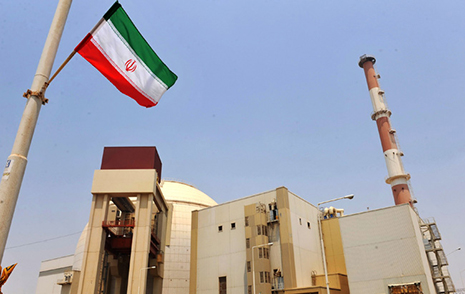Here’s what everyone should know as the 114th Congress begins:
The Interim Nuclear Deal is Working
Iran has fully upheld its commitments under the Joint Plan of Action (JPOA), the interim nuclear deal that has frozen and partially rolled back Iran’s nuclear program over the past year. Iran no longer enriches to the 20 percent level, which was often considered the most dangerous element of Iran’s enrichment program. Iran’s centrifuges and stockpile of low enriched uranium remain frozen. Inspectors from the International Atomic Energy Agency (IAEA) now have daily access to Iran’s enrichment facilities and expanded access to other nuclear sites.
The IAEA continues to verify Iran’s compliance with the JPOA. Some expressed concern over Iran’s testing of advanced centrifuges, though this was largely based on a flawed interpretation of the JPOA. Nonetheless, the November 24 extension addressed these concerns by clarifying and enhancing restrictions on Iran’s centrifuge testing.
New Sanctions Would Violate the Interim Nuclear Deal
Since the JPOA went into effect, the P5+1 has agreed not to impose “new nuclear-related sanctions” on Iran. While the administration continues to enforce existing sanctions, passage of new nuclear sanctions by Congress would violate the deal.
The impact of Congress forcing the U.S. to violate the JPOA would be dire. First, the negotiations would collapse along with the nuclear constraints and enhanced inspections included in the agreement. Moreover, such action would likely unravel vital international enforcement of the sanctions regime, playing into the hands of Iranian hardliners. As a result, we would lose our key leverage for securing Iranian nuclear concessions at the same time we lose strong limitations on Iran’s nuclear program.
Inspections and Verification are the Keys to a Good Deal
A final deal would obstruct Iran’s potential pathways to a nuclear weapon via further nuclear limitations and enhanced inspections. Thus, any overt breakout attempt would be swiftly detected while enhanced monitoring mechanisms, including the IAEA Additional Protocol, diminish the danger of covert breakout.
Some have suggested that a deal should end all Iranian enrichment and dismantle Iran’s nuclear infrastructure. However, such a scenario is not realistic, necessary, or even necessarily desirable. No nation has ever built a nuclear weapon under the watch of IAEA inspectors, including the six non-nuclear weapon states that enrich uranium on their own soil. Further, the demand that Iran relinquish all enrichment capabilities has blocked viable deals in the past, including a 2005 Iranian offer to limit its centrifuges to 3,000. Instead, the collapse of the talks led to mutual escalation that pushed Iran’s centrifuges to over 20,000. This escalation was not stalled until the JPOA came into force last year.
Instead of wasting energy on unnecessary demands that preclude any realistic deal, the priority should be an agreement that establishes robust inspection and verification mechanisms.
Iran is Battling ISIS
The U.S. and Iran have shared strategic interests in ensuring regional stability. However, the Obama administration has been clear that the negotiations are focused solely on the nuclear issue and that enhanced regional cooperation would not be considered until after a nuclear deal is concluded.
In Iraq, Iran has already helped replace Iraqi Prime Minister Nouri al-Maliki with Haider al-Abadi, warned Shia militants not to attack U.S. forces and conducted strikes against ISIS. Following a nuclear deal, the U.S. could broaden communication channels and explore expanded coordination against ISIS. U.S.-Iran security cooperation could also extend to Afghanistan, where Iran previously helped to form a new Afghan government before President George W. Bush lumped Iran into the rhetorical axis of evil.
Failure Would Have Devastating Consequences
Diplomatic failure could lead to both an Iranian nuclear weapon and war.
Iran could resume enrichment to the 20% level or beyond while bringing online thousands of additional centrifuges. IAEA inspectors would have far less monitoring than they have under the JPOA, and Iran could even withdraw from the Non-Proliferation Treaty and end international monitoring altogether. Work at the Arak heavy water reactor could resume, increasing the risk that it produces large stockpiles of plutonium.
If talks collapse, the U.S. would likely amplify sanctions on Iran. Far from convincing Iran to surrender, new sanctions would likely trigger Iranian counter-escalations that could lead to war. Further, military strikes cannot erase Iran’s nuclear know-how and would likely only incentivize an Iranian push for a nuclear deterrent. Short of a costly, open-ended occupation costing trillions and involving hundreds of thousands of troops, there is no military option to eliminate the nuclear threat.
Costello is a policy fellow with the National Iranian American Council.
More about:
















































